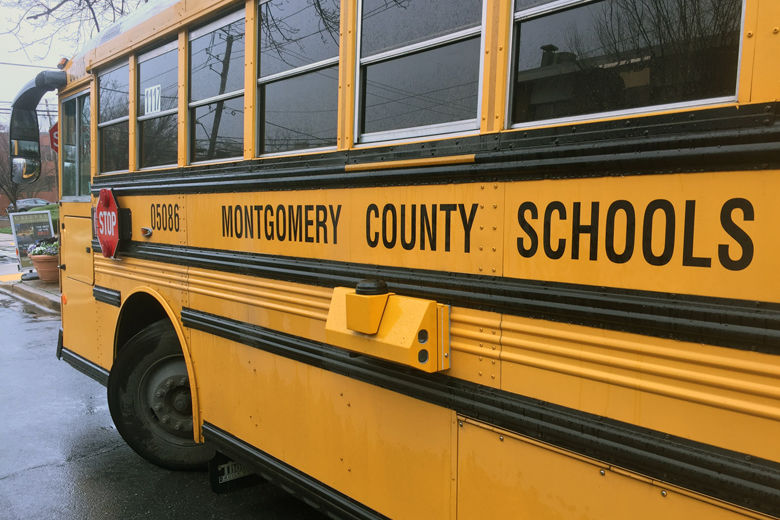Opinion by Lavanya Sithanandam Jan. 15, 2021 at 9:00 a.m. EST Washington Post
Lavanya Sithanandam is a pediatrician serving a predominantly low-income and minority population in Montgomery and Prince George’s counties.

Montgomery County Public Schools is failing its Black, Latino and disadvantaged minority students, who are falling further and further behind their peers.
Though school closures may have been necessary in the spring, numerous U.S. and international studies demonstrate they are unnecessary now and that school districts that continue to insist on this approach are relying on outdated science. MCPS has shuttered its doors for more than 300 days, and the equity gap that existed before the pandemic has widened substantially. In fact, prolonged school closures are affecting minority students significantly more than the coronavirus itself.
Decades of systemic racism have left minority neighborhoods and their academic support structures already weakened, and virtual learning is worsening the learning loss in students from these communities. First-quarter MCPS grades revealed alarming differences in the failure rates between White and minority students. African American and Hispanic students from low-income families failed classes at rates 5 to 6 times more compared with last year, whereas White students had minimal increases.AD
Minority students often lack access to tutors, pods or expensive learning centers, and they sometimes have to juggle child-care responsibilities, jobs and learning in more challenging home environments. Their parents are more likely to be essential workers who are unable to supervise the day-to-day demands of their children’s education. Some do not have access to quality Internet services. Students report they find distance-learning platforms inherently stressful and have stopped logging on altogether.
In my clinic, we are seeing children who were already having difficulty in school now failing classes, and honors students barely passing. English-language learners are struggling with maintaining language skills because of their lack of daily interaction with native English speakers. One Haitian immigrant teen recently told me that she used to be fluent in English, but “now I only speak Creole at home, so I am forgetting my words.”
I am also seeing patients who could be the first in their family to attend college decide to forgo their dreams of higher education. Without in-person access to counselors and teachers, they are finding it extremely difficult to navigate the challenging college application process. Maintaining high grades, for which they have worked harder, and in the face of greater head winds than their wealthier peers, has also presented challenges. Inside Higher Ed found that college applications for first-generation students and those eligible for application fee waivers were down 16 percent this year, with many colleges reporting a decrease in Latino and Black college applications.AD
In addition to academic challenges, children and teens are desperate for social interaction. A recent report by the Centers for Disease Control and Prevention revealed pediatric emergency room visits related to mental health were up 24 percent for children ages 5 to 11 and 31 percent for children ages 12 to 17. In my practice, we have documented a 30 percent increase in mental health referrals since the start of the pandemic for conditions such as depression, anxiety and suicidal ideation. Social isolation affects children from all communities, but minority children, who are particularly vulnerable to mental health crises, are at higher risk. Furthermore, there has been a 40 percent decrease in reporting of child neglect and abuse because educators are typically the main source to report. This leads to fewer interventions and worsening outcomes.
We now have convincing data that schools are safe and should be open for in-person learning. Even in minority communities where coronavirus rates may be higher, data has shown that schools are not superspreader locations, and that, with mitigation such as masking and distancing, schools are safe places for students and teachers. The CDC, World Health Organization, American Academy of Pediatrics and numerous respected public health leaders acknowledge schools are safe and should remain open.
The harm of prolonged school closure is just too devastating to keep schools closed. And the knowledge from the thousands of schools that safely reopened in the fall demonstrates masking and social-distancing protocols are effective and sufficient.AD
And herein lies the rub. MCPS knows this. But, because of outside pressure, it is keeping school officially closed while providing subsidies for low-income children to attend in-person, privately run “equity hubs” where they can learn remotely, sitting in school alongside other students. Proctors replace teachers. This is a clear recognition that in-person learning is possible despite rising coronavirus rates in the community. But this is an unnecessary, inferior alternative.
Sadly, a county that has typically been at the forefront of addressing inequities is not adequately addressing learning loss and the ever-widening opportunity gap that results from remote learning. Contrary to the false claims that minorities don’t want to return to in-person learning, the presence of minority-filled equity hubs and results from the recent MCPS survey demonstrate that Latino and African American interest for school return is significant. This interest will continue to grow as schools reopen and it becomes clear that the health risks are minimal. In my practice, which is 90 percent minority, there is a universal desperation among students to return to school.
If MCPS is genuinely concerned about equity for its students, particularly students of color, it must reopen to provide desperately needed additional resources that can only be delivered through in-person learning. School failure has been linked to poor lifelong health consequences through decreased employment and earning capacity, higher risk of incarceration and even premature death from substance abuse and preventable diseases.AD
An entire generation between the ages of 5 and 18 has been effectively removed from society at large. They do not have the same ability to vote or speak out, so it is high time for children’s advocates, including teachers and parents, to raise their voices for a return to school.R